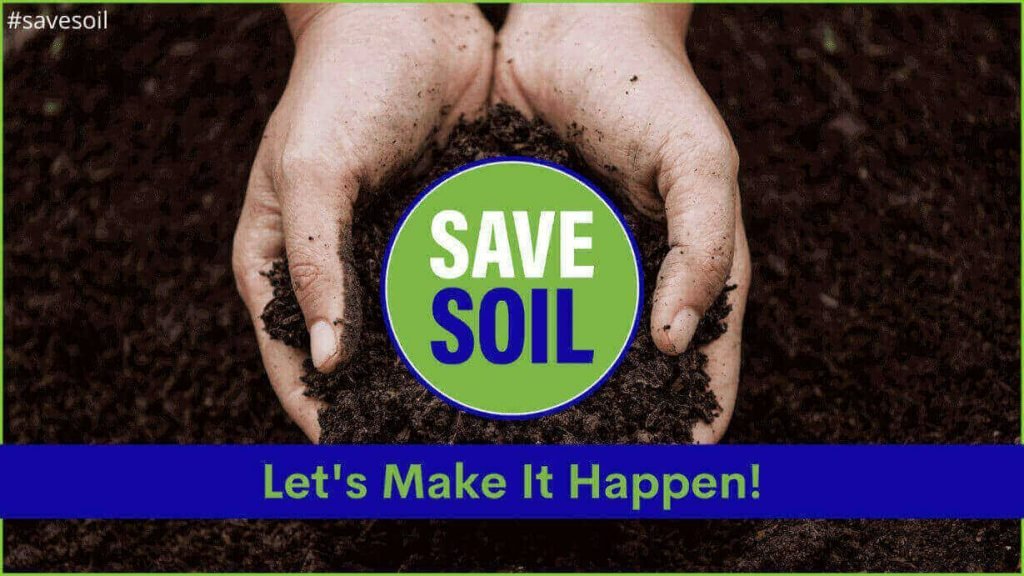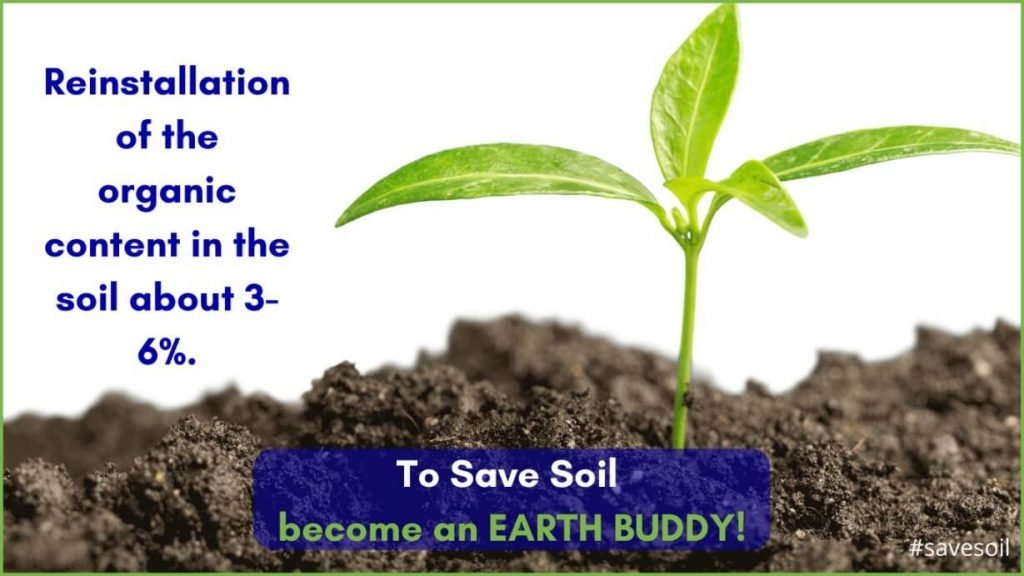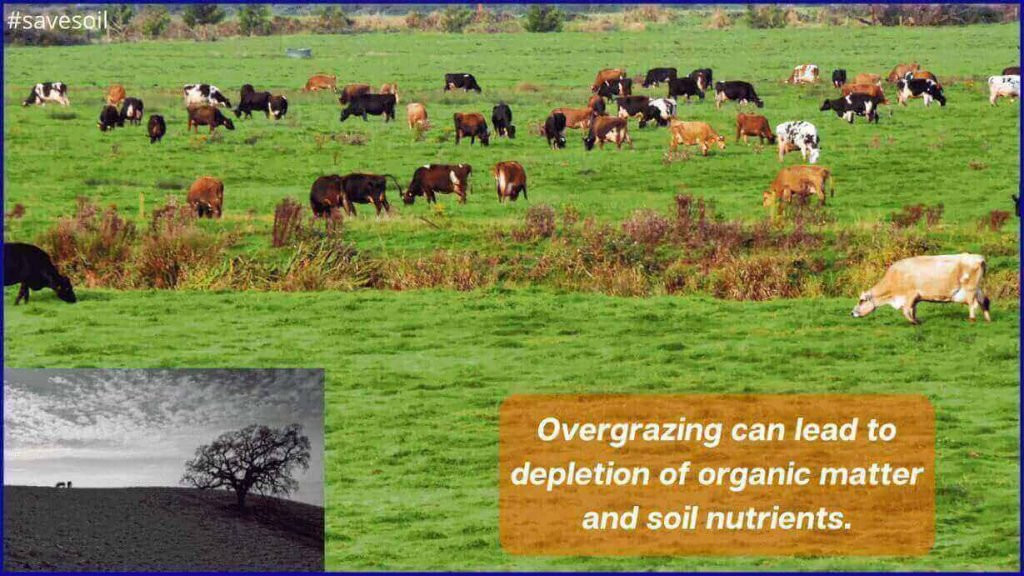Soil is the basis of our life but the life of the soil (fertile potential) is in danger. We have to save soil, we need to take action for the resuscitation of the soil. We are hurting the soil, making it unfavorable to give birth.
It took years for the formation of only a 1 cm layer of the soil and we destroy it in minutes. For that in 2022, an initiative is taken by a Yogi, Mystic, and Visionary, Sadhguru. About which we are sharing lots of information to get to know the exact purpose, solution, and actions as well.
What Is Save Soil Movement?
Save the soil movement in India is initiated by a proponent of spirituality and a yoga GURU, Sadhguru aka Jagadish Vasudev. This initiation is taken by Sadguru just for the reinstallation of the organic content in the soil so that the soil health can be recovered again.

The purpose of “Save The Soil” movement in India is not only to make the people of India aware but also to make the whole world aware of soil health. This movement will bring together to people of the entire world to take necessary actions for the recovery of soil health. To spread awareness towards soil health and this movement, Sadhguru also started a pilgrimage of 30,000 km, about which thoroughly is given ahead.
Why Save Soil?
Soil is the basis of life on Earth. In only 1 gram of soil, billions of lives are present. But think, the nutrients in the soil are reducing very rapidly, which means the lives that are present in the soil are affected very badly. We, humans, are completely dependent upon the soil. Our food, climate, weather, ecosystem, everything directly or indirectly depend upon the soil.
Mankind interference is degrading the organic content of the soil and making it non-fertile and non-water retainable, hence the soil can not be the residence/habitat of billions of lives. Here we are sharing some data related to soil degradation.
- According to the United Nations’ report one-third of the World’s Soil has already been degraded. We have about 45 to 60 years only to rejuvenate the soil.
- Another report of the Journal of Biomass Conservation revealed that 80% of the biomass insects have disappeared from the planet in the last 25 to 30 years.
- World Economic Forums have predicted that we will have 30% less food in the next 20 to 25 years, there will be a serious food crisis. It is calculated that about 27 thousand species of microbes are going extinct per year and the microbes present in the soil play a vital role in growing plants of vegetables, fruits, etc. If it continues very soon we will be completely unable to grow food for ourselves. Which seems like a nightmare.
To deal with these predictions or prove them wrong we have to do something so that we can save the lives on the planet Earth, this can be happened by only adopting the “Save The Soil Movement started in India”.
Save The Soil Movement In India
We have been already discussed a quite about the Save The Soil Movement started in India. This movement targets to satisfy the organic content of the soil. Let me explain it in detail.
If we specifically talk about India, nearly 62% of India’s soil contains less than 0.5% organic content and a normal agricultural land should have about 3 to 6 % of organic content.

So basically, the main purpose of Save The Soil Movement In India is to satisfy the organic content in soil and change the sandy soil into fertile soil. By adopting some habits we can save soil from degradation.
Save Soil Movement will message to the 3.5 billion people of the world which are about 60% electorate.
Slogans On Save Soil
To spread more consciousness in people some slogans are also have been made. Some of them are given below
- Each One Reach One.
- To Save Soil Become an Earth Buddy!
- Let’s make it happen.
Purpose Of Save Soil Movement
- This movement aims to grab the attention of all humans towards dying soil and leave a message in everyone’s mind that is “Save Soil”.
- To inspire a 3.5 billion population that the nature heeling actions should be a part of policies, and these agendas should be election issues.
- The Save Soil Movement along with these targets mainly focuses on the reinstallation of the organic content in the soil about 3-6%. Because the soil up to a minimum of 3% of organic content is the best fertile and healthy soil.
Sadhguru 30,000-km ‘Save Soil’ Road Trip
Sadhguru took this “Conscious Planet” initiative and to make it more effective, Sadhguru decided to travel 30,000 km motorbike riding by himself. This journey of 100 days started on 19 March 2022, begins from Birmingham, and will end in India. During this whole journey, Sadhguru will travel across 26 countries and will meet with the leader people of those countries to spread awareness about this movement.
Sadhguru is about 65 years old now and will ride a motorcycle continuously for 100 days and will cover 30,000km, he is risking his life for the Save Soil Movement. I think this is enough to let us know how much important it has become to save soil from dying. Let’s support “Save The Soil Movement Started In India” by Sadhguru. After visiting 26 countries (which was about 20,000 km) in 70 days Sadhguru entered India. He firstly lands in Jamnagar, Gujrat on the 70th day and visited various cities in various states of India to spread awareness about the #savesoil mission. Sadhguru also attended IPL 2022. And today (21 June) the great pilgrimage for Save Soil Movement initiated by Sadhguru ended. For the termination of the pilgrimage of 100 days across 27 nations including India, the last event is conducted at Isha Yoga Centre, Coimbatore on 21 June.
Save Soil Collaboration With UNCCD
United Nations Convention to Combat Desertification (UNCCD) is also a part of the save the soil campaign initiated by Sadhguru. UNCCD is helping to work on many aspects of save the soil campaign such as scientific knowledge, communications, and outreach.

Mankind Interference In Soil Degradation
We, humans, are constantly interfering in the structure of all-natural components whether it is water or soil or anything. Let’s take a look at the deeds we have done with the soil.
- Rapid Clearance of greenery from the land made it barren.
- Plowing the soil exposed to microbes eventually kills the microbes that are mainly responsible for good farming.
- Industrial farming.
- Using harmful chemicals beyond the limit destroys the fertility of the soil.
Not only these but we did so much to kill the soil. Now it’s time to take care of the soil by taking some small steps, especially by changing some agricultural practices.
We had tried to understand that, What Is Save Soil Movement? but How to save soil? is a question that remains a point of concern. Let’s find out some strategies that can help us to answer the question, How to save soil?
How to Save Soil?
Afforestation
We can consider afforestation as an important act in the favour of Save Soil Movement. It is a process by which we plant a large number of trees targeting those areas where almost no trees were present. The process or act of afforestation can turn vacant land into green grassy forests.
But how does it relate to How to Save Soil? The plant roots hold the upper layer of soil which protects the soil from erosion from the water and wind. Hence Afforestation can conserve soil from erosion and can be a vital part of the “Save The Soil campaign”.
Checking Overgrazing
Overgrazing by cattle on a particular grassland can lead to depletion of organic matter and soil nutrients. Overgrazing can result in the exposure of ground and compaction of soil by wind and rain. We need to take care of such lands so that they are not overgrazed by wild animals as well as pet cattle.

There are some overgrazing management methods are available that can involve getting rid of the land being overgrazed. One of them is stored fodder. People can be fed stored fodder to their cattle and can be a part of “Save The Soil Campaign”.
Constructing Dams
Dams are also a good method to save the soil from erosion. But how to save soil by constructing dams? Remember what dams exactly do? They reduce the water flow velocity which ultimately results in the prevention of erosion of the soil.
Changing Agricultural Practices
Changing Agricultural Practices is also an answer to how to save soil. By making some changes in the agricultural practices we can save the agricultural land by the degradation and the future of our next generation. The following steps can be the options to adopt the changes in agricultural practices.
- Crop Rotation
- Strip Cropping
- Use of Early Maturing Varieties
- Contour Ploughing
- Terracing and Contour Bunding
- Checking Shifting Cultivation
- Plowing the Land in the Right Direction
Final Words
It is estimated that in ancient times a man could gain enough Vitamin C by eating only one orange, Whereas at that time the amount of vitamin C that was available from one orange, to get that much vitamin C, at least 15 oranges have to be eaten today. This indicates the nutritional deficiency of the soil.
Now we all are well aware of the condition of the soil. Let’s be a part of the save the soil campaign started in India and Save soil. Not only soil but can say the life on Earth, the future of our children. Whether the Save Soil Movement Pilgrimage is ended today but the efforts to rejuvenate the soil should not be ended, we have to keep trying to save our soil. Let’s make it happen and become Earth Buddies! Tell us what would you do to save soil? in the comment box.
FAQs
How can we save soil?
We can save soil by adopting afforestation, checking over overgrazing, and by changing some agricultural practices such as crop rotation, contour plowing, etc.
Why is it necessary to conserve soil?
Mankind interference is degrading the organic content of the soil and making it non-fertile and non-water retainable, hence the soil can not be the residence/habitat of billions of lives. Soil is the basis of life on Earth so we have to conserve soil.
Where was the save the soil movement started in India?
Save the soil movement was started 24 years ago in Hodshangabad, Madhya Pradesh with the name “Mitti Bachao Andolan”.
What is soil movement?
Save Soil Movement is taken by Sadguru just for the reinstallation of the organic content in the soil so that the soil health can be recovered again.





